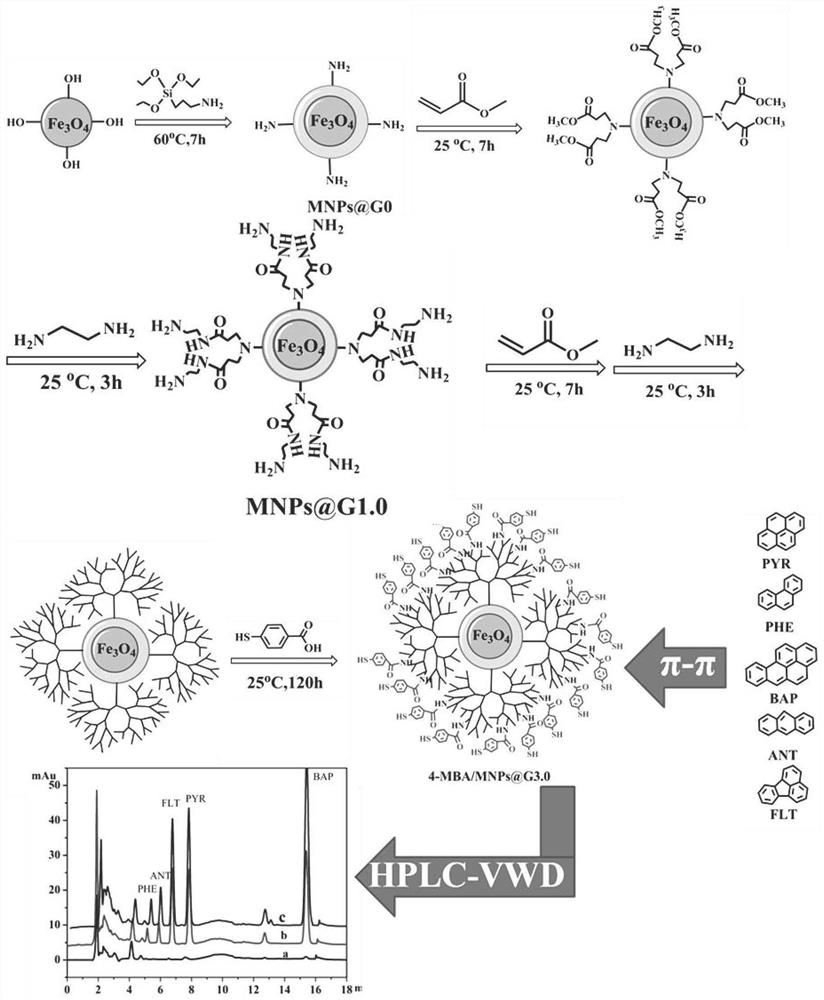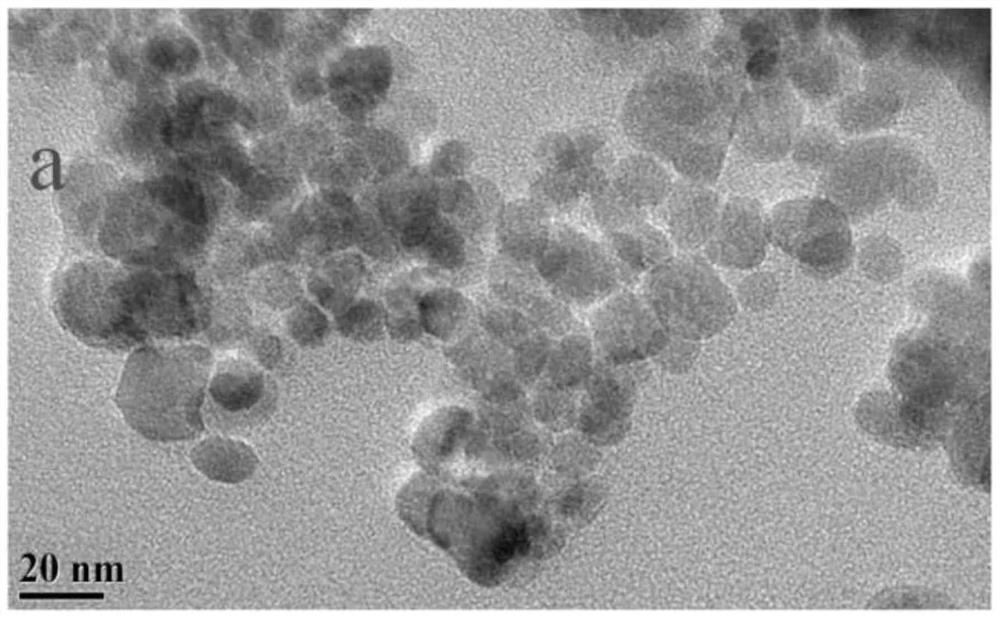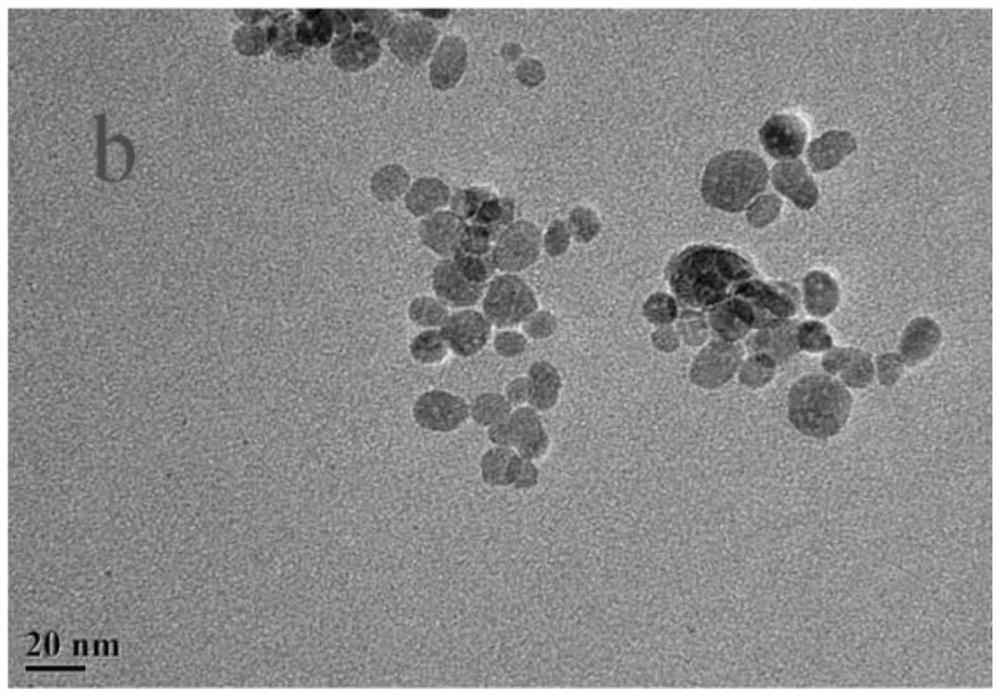Magnetic PAMAM dendrimer material modified by p-mercaptobenzoic acid
A technology of p-mercaptobenzoic acid and polymer materials, applied in the field of magnetic materials, can solve the problems of weak adsorption capacity, few adsorption types, easy aggregation, etc., and achieve the effect of good adsorption performance
- Summary
- Abstract
- Description
- Claims
- Application Information
AI Technical Summary
Problems solved by technology
Method used
Image
Examples
Embodiment 1
[0062] This embodiment provides a method for preparing a magnetic PAMAM dendritic polymer material (MNPs@G3.0@4-MBA) modified by p-mercaptobenzoic acid. The schematic flow chart is as follows figure 1 As shown, it includes the following steps:
[0063] (1) Synthesis of magnetic nanoparticles (MNPs):
[0064] 5.4g FeCl 3 ·6H 2 O and 2.78g FeSO 4 ·7H 2 O was dissolved in 100mL of deoxygenated water, and under nitrogen atmosphere, 18mL of 25%-28% ammonia water was added dropwise while stirring, and the temperature was raised to 80°C to continue stirring for 30min, and then cooled to room temperature. Washed with pure water several times, and dried overnight at 50°C in a vacuum oven to obtain magnetic nanoparticles MNPs.
[0065] (2) Amino-modified magnetic nanoparticles (MNPs-NH 2 )Synthesis:
[0066] Ultrasonic dispersion of 2 g of MNPs in 200 mL of ethanol, under the protection of nitrogen, 14 mL of 3-aminopropyltriethoxysilane (APTES) was added dropwise with stirring, a...
Embodiment 2
[0084] This embodiment provides a method for magnetic solid-phase extraction to detect polycyclic aromatic hydrocarbons in environmental water samples. The schematic flow chart is as follows figure 1 As shown, it includes the following steps:
[0085] The 80mg p-mercaptobenzoic acid modified magnetic PAMAM dendritic polymer material of the present invention (such as the MNP@G3.0@4-MBA prepared in Example 1) was dispersed in 60mL of polycyclic aromatic hydrocarbons as a solid phase extraction adsorbent. In the sample solution to be tested, the sample solution to be tested contains 5 kinds of polycyclic aromatic hydrocarbons: PHE, ANT, FLT, PYR and BaP, and the concentration of the 5 kinds of polycyclic aromatic hydrocarbons in the sample solution to be tested is 10 μg / L, and the control solution The pH is 7.0, shaken at 200rpm in a constant temperature oscillator at 20°C for 50min, and the solid phase extraction adsorbent and supernatant are separated by an external magnetic fi...
Embodiment 3
[0089] 1. Comparing the magnetic nanoparticles grafted by PAMAM dendritic polymers of different generations modified with p-mercaptobenzoic acid, the prepared PAMAM dendritic polymer grafted magnetic nanoparticles are used as solid phase extraction adsorbents for the extraction of target substances Efficiency impact.
[0090] The preparation process of MNPs@G3.0, MNPs@G1.0@4-MBA, MNPs@G2.0@4-MBA, MNPs@G3.0@4-MBA was carried out according to the operation of Example 1. The extraction was carried out according to the operation of Example 2, and the extraction efficiency of the target extract was compared, and the results were as follows: Figure 5a shown.
[0091] Depend on Figure 5a It can be seen that the recovery rate of PAHs is MNPs@G3.02 More than G1.0 and G2.0, so MNPs@G3.0@4-MBA contains more 4-MBA, which can get a relatively high recovery rate. Therefore, the present invention preferably uses MNPs@G3.0@4-MBA as the solid phase extraction adsorbent.
[0092] 2. The i...
PUM
 Login to View More
Login to View More Abstract
Description
Claims
Application Information
 Login to View More
Login to View More - R&D
- Intellectual Property
- Life Sciences
- Materials
- Tech Scout
- Unparalleled Data Quality
- Higher Quality Content
- 60% Fewer Hallucinations
Browse by: Latest US Patents, China's latest patents, Technical Efficacy Thesaurus, Application Domain, Technology Topic, Popular Technical Reports.
© 2025 PatSnap. All rights reserved.Legal|Privacy policy|Modern Slavery Act Transparency Statement|Sitemap|About US| Contact US: help@patsnap.com



